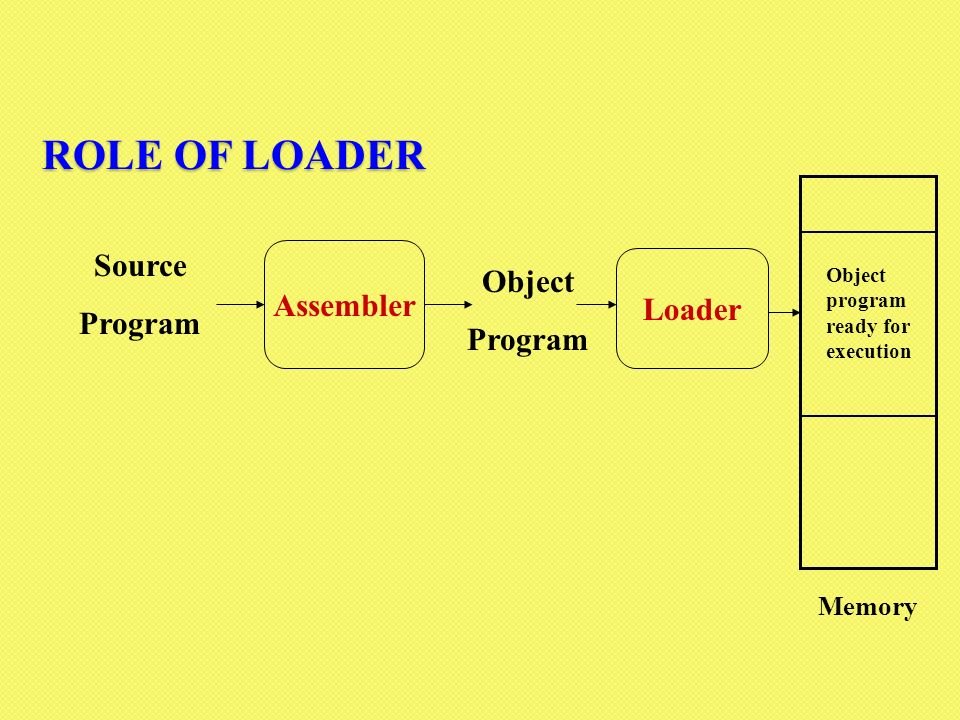What Is A Loader?
Category: COMPUTER SCIENCE | 18th June 2024, Tuesday

A Loader Is A Crucial Part Of An Operating System That Is Responsible For Loading Executable Files Into Memory And Preparing Them For Execution. When A Program Is Run, The Loader Performs Several Tasks To Ensure That The Program Can Execute Properly. Here’s A Detailed Look At What A Loader Does And Its Importance In The Execution Process:
Key Functions Of A Loader
- Loading:
- The Loader Reads The Executable File From Storage (e.g., A Hard Disk Or SSD) And Loads It Into The Appropriate Memory Space In RAM.
- Memory Allocation:
- The Loader Allocates Memory For The Program’s Code, Data, And Stack. It Ensures That There Is Sufficient Memory Available And Sets Up The Memory Layout For The Program.
- Relocation:
- If The Executable Contains Any Address References That Are Not Yet Resolved, The Loader Adjusts These Addresses To Reflect The Actual Locations In Memory Where The Program Will Reside. This Step Is Necessary To Accommodate Programs That Are Loaded Into Different Memory Locations At Different Times.
- Linking:
- For Dynamically Linked Programs, The Loader Loads The Required Shared Libraries (dynamic Link Libraries Or DLLs On Windows, Shared Objects Or .so Files On Unix/Linux). It Resolves References To These Libraries And Ensures That The Necessary Functions And Variables Are Accessible.
- Setting Up Execution Environment:
- The Loader Sets Up The Execution Environment For The Program, Including Initializing Registers, Setting Up The Stack Pointer, And Establishing The Program’s Entry Point (the Starting Instruction).
- Starting Execution:
- Once Everything Is Set Up, The Loader Transfers Control To The Program’s Entry Point, Effectively Starting The Execution Of The Program.
Steps In The Loading Process
- Loading The Program:
- The Loader Copies The Program’s Executable Code From Secondary Storage Into Main Memory.
- Allocating Memory:
- The Loader Determines The Memory Requirements Of The Program And Allocates Space For The Program’s Code, Data Segments, And Stack.
- Relocating Addresses:
- The Loader Adjusts Address References Within The Program To Reflect The Actual Memory Locations Where The Program Is Loaded. This Includes Updating Jump Addresses And Pointers.
- Loading Libraries:
- If The Program Relies On Dynamic Libraries, The Loader Ensures These Libraries Are Loaded Into Memory And Resolves References To Library Functions And Variables.
- Initializing The Program:
- The Loader Sets Up The Initial Execution Context, Including Register Values And The Program Stack.
- Starting Execution:
- The Loader Jumps To The Program’s Entry Point, Starting Its Execution.
Types Of Loaders
- Absolute Loader:
- Loads The Program Into A Specified Memory Location Without Any Modifications. The Program Must Be Prepared To Run From That Specific Location.
- Relocating Loader:
- Adjusts The Addresses Used In The Program To Reflect The Actual Memory Location Where It Is Loaded. This Allows The Program To Be Loaded At Different Memory Locations At Different Times.
- Dynamic Linking Loader:
- Loads And Links Shared Libraries (dynamic Link Libraries) At Runtime, Resolving References To These Libraries As The Program Executes.
- Bootstrap Loader:
- A Special Type Of Loader That Runs When A Computer Is First Powered On Or Reset. It Loads The Operating System Into Memory So That It Can Begin Operation.
Importance Of The Loader
- Program Execution: The Loader Is Essential For Preparing A Program To Run, Ensuring That All Necessary Code And Data Are Correctly Loaded Into Memory.
- Dynamic Linking: Loaders Enable Dynamic Linking, Allowing Programs To Use Shared Libraries, Which Can Save Memory And Allow For Modularity And Easier Updates.
- Memory Management: The Loader Manages Memory Allocation For Programs, Helping To Ensure Efficient Use Of System Resources.
Example Of The Loading Process
- User Command: A User Issues A Command To Run A Program.
- Operating System Invocation: The Operating System’s Command Interpreter Passes The Command To The Loader.
- Loading And Relocation: The Loader Reads The Executable File, Loads It Into Memory, Relocates Addresses As Necessary, And Loads Required Dynamic Libraries.
- Environment Setup: The Loader Sets Up The Program’s Execution Environment.
- Transfer Control: The Loader Transfers Control To The Program’s Entry Point, Starting Its Execution.
In Summary, The Loader Is A Vital Component Of The System’s Execution Process, Responsible For Loading, Relocating, Linking, And Starting Programs. It Works Closely With The Operating System To Manage The Transition From Storage To Execution In Memory.
Tags:
Loader, What Is A Loader, Loader's Definition, Define Loader
